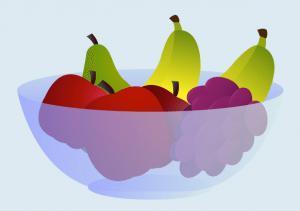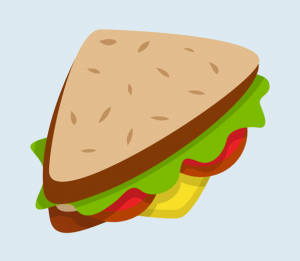November is Diabetes Month and we're going to be celebrating all month long! We'll kick off our party of information with a free handout, excerpted from the 12 Lessons of Diabetes Program. Are you ready? Here we go!Fiber and Blood Glucose by Jill Weisenberger, MS, RD, CDEWhy Fiber?Fiber is good for digestion and so much more. People who eat a lot of fiber-rich foods have a lower risk of developing diabetes, coronary heart disease, stroke, high blood pressure, and obesity. In fact, people with the highest fiber intakes are 29% less likely to develop type 2 diabetes than those with the lowest intakes of fiber.Understanding Fiber:All fibers are not the same. We frequently talk about fiber as if it is a single nutrient, and we sometimes identify fibers as either soluble or insoluble. That’s even the way they are described on a food label. This classification, unfortunately, does not identify fiber’s role in the body. It’s better to classify fibers in terms of their viscosity and fermentability.Though the mechanism is not well-understood, viscous fibers like pectins, guar gum, beta-glucans, agar, and carrageenan help lower after-meal blood glucose and reduce insulin levels.Fermentable fibers may also improve blood glucose. Pectin and guar gum are highly fermentable. Beta-glucans, inulin, and oligofructose are also fermented in the gut. When these fibers reach the large intestine, colonic bacteria make a meal of them and, in the process, produce short chain fatty acids (SCFA). These SCFAs appear to improve insulin sensitivity. Fibers that are resistant to fermentation increase stool weight, decreasing transit time.Talking About Fiber:So now we face the question about how to balance our fiber intake. Since the average fiber intake among Americans is a mere 15 grams, but the Adequate Intake (AI) is 25 grams for women and 38 grams for men, we must increase our consumption of all types of fiber.We also need to understand the importance of getting fiber from a variety of foods, to ensure the intake of many different fiber types. When looking for foods to help control blood glucose, I especially focus on oats, barley, beans, and lentils as part of a varied diet, and you can too!Like what you see? Download a PDF of this handout now! Or check out more resources in the Nutrition Education Store...
Stephanie Ronco has been editing for Food and Health Communications since 2011. She graduated from Colorado College magna cum laude with distinction in Comparative Literature. She was elected a member of Phi Beta Kappa in 2008.
Free Handout for Diabetes Month!
November is Diabetes Month and we're going to be celebrating all month long! We'll kick off our party of information with a free handout, excerpted from the 12 Lessons of Diabetes Program. Are you ready? Here we go!Fiber and Blood Glucose by Jill Weisenberger, MS, RD, CDE Why Fiber?Fiber is good for digestion and so much more. People who eat a lot of fiber-rich foods have a lower risk of developing diabetes, coronary heart disease, stroke, high blood pressure, and obesity. In fact, people with the highest fiber intakes are 29% less likely to develop type 2 diabetes than those with the lowest intakes of fiber.Understanding Fiber:All fibers are not the same. We frequently talk about fiber as if it is a single nutrient, and we sometimes identify fibers as either soluble or insoluble. That’s even the way they are described on a food label. This classification, unfortunately, does not identify fiber’s role in the body. It’s better to classify fibers in terms of their viscosity and fermentability.Though the mechanism is not well-understood, viscous fibers like pectins, guar gum, beta-glucans, agar, and carrageenan help lower after-meal blood glucose and reduce insulin levels.
Why Fiber?Fiber is good for digestion and so much more. People who eat a lot of fiber-rich foods have a lower risk of developing diabetes, coronary heart disease, stroke, high blood pressure, and obesity. In fact, people with the highest fiber intakes are 29% less likely to develop type 2 diabetes than those with the lowest intakes of fiber.Understanding Fiber:All fibers are not the same. We frequently talk about fiber as if it is a single nutrient, and we sometimes identify fibers as either soluble or insoluble. That’s even the way they are described on a food label. This classification, unfortunately, does not identify fiber’s role in the body. It’s better to classify fibers in terms of their viscosity and fermentability.Though the mechanism is not well-understood, viscous fibers like pectins, guar gum, beta-glucans, agar, and carrageenan help lower after-meal blood glucose and reduce insulin levels. Fermentable fibers may also improve blood glucose. Pectin and guar gum are highly fermentable. Beta-glucans, inulin, and oligofructose are also fermented in the gut. When these fibers reach the large intestine, colonic bacteria make a meal of them and, in the process, produce short chain fatty acids (SCFA). These SCFAs appear to improve insulin sensitivity. Fibers that are resistant to fermentation increase stool weight, decreasing transit time.Talking About Fiber:So now we face the question about how to balance our fiber intake. Since the average fiber intake among Americans is a mere 15 grams, but the Adequate Intake (AI) is 25 grams for women and 38 grams for men, we must increase our consumption of all types of fiber.We also need to understand the importance of getting fiber from a variety of foods, to ensure the intake of many different fiber types. When looking for foods to help control blood glucose, I especially focus on oats, barley, beans, and lentils as part of a varied diet, and you can too!Like what you see? Download a PDF of this handout now! Or check out more resources in the Nutrition Education Store...
Fermentable fibers may also improve blood glucose. Pectin and guar gum are highly fermentable. Beta-glucans, inulin, and oligofructose are also fermented in the gut. When these fibers reach the large intestine, colonic bacteria make a meal of them and, in the process, produce short chain fatty acids (SCFA). These SCFAs appear to improve insulin sensitivity. Fibers that are resistant to fermentation increase stool weight, decreasing transit time.Talking About Fiber:So now we face the question about how to balance our fiber intake. Since the average fiber intake among Americans is a mere 15 grams, but the Adequate Intake (AI) is 25 grams for women and 38 grams for men, we must increase our consumption of all types of fiber.We also need to understand the importance of getting fiber from a variety of foods, to ensure the intake of many different fiber types. When looking for foods to help control blood glucose, I especially focus on oats, barley, beans, and lentils as part of a varied diet, and you can too!Like what you see? Download a PDF of this handout now! Or check out more resources in the Nutrition Education Store...


Stephanie Ronco has been editing for Food and Health Communications since 2011. She graduated from Colorado College magna cum laude with distinction in Comparative Literature. She was elected a member of Phi Beta Kappa in 2008.
Diabetes Month Resources
Moderation and Cookies: Tips and Tricks for Healthful Eating